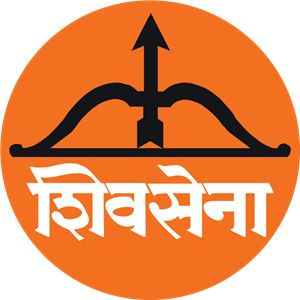Shiv Sena: 7 Key Insights Into Its History, Impact, and Significance
Introduction
Shiv Sena, a political party based in Maharashtra, has had a profound impact on the state’s politics, society, and culture. Founded by the charismatic and controversial leader Bal Thackeray in 1966, Shiv Sena started as a regional party with a focus on the welfare and rights of Marathi-speaking people. Over the years, it has grown into a major political force that has played a key role in Maharashtra’s governance and national politics. In this article, we’ll explore the biography of Shiv Sena, its history, daily life impacts, significance, and observance in society.
History of Shiv Sena
Shiv Sena was established by Bal Thackeray in Mumbai as a party primarily aimed at protecting the rights of Marathi-speaking people. Bal Thackeray, a former cartoonist, quickly became the party’s face and was known for his aggressive stance on social issues and regional pride. The party initially focused on issues such as the employment of Marathi-speaking people in the state and the cultural identity of Maharashtra.
The party’s influence expanded rapidly, especially among the working-class Marathi population. It gained significant popularity in Mumbai, and Thackeray’s persona as a strong, assertive leader resonated with many. Shiv Sena also developed a strong base in the Brihanmumbai Municipal Corporation (BMC), which it controlled for decades. Over time, the party also made its presence felt in state politics and became part of several coalitions.
Daily Life and Impact of Shiv Sena
The daily life of those influenced by Shiv Sena in Maharashtra is shaped by a strong sense of regional identity and pride. Shiv Sena’s rise is deeply connected to the Marathi manoos (Marathi people) movement. For decades, the party advocated for better job opportunities for locals, fair treatment in the workplace, and cultural recognition.
Shiv Sena also played a significant role in shaping Mumbai’s cultural landscape. From its promotion of Ganesh Chaturthi celebrations, which became a massive community event, to its support for local language and arts, the party emphasized the importance of preserving Marathi culture. This was evident in the party’s efforts to promote the Marathi language in media, education, and government services.
However, Shiv Sena’s daily life impact has not been without controversy. The party has been criticized for its aggressive approach toward non-Marathi migrants, particularly from North India, and its heavy-handed tactics against perceived enemies. Despite this, Shiv Sena’s influence on the ground has remained strong, especially among working-class communities in Mumbai and other parts of Maharashtra.
Key Facts
- Founded: In 1966 by Bal Thackeray.
- Political Stance: Initially focused on Marathi pride and regionalism, it later shifted towards a more nationalist and Hindu ideology.
- Symbol: The party’s symbol is the tiger, which signifies courage, power, and strength, all attributes associated with the party’s image.
- First Political Success: The party won its first major electoral victory in Municipal Elections in 1968, establishing a stronghold in Mumbai.
- Relationship with BJP: Shiv Sena has had a fluctuating but significant alliance with the Bharatiya Janata Party (BJP), particularly during the 1990s and early 2000s.
- Current Leadership: After Bal Thackeray’s death in 2012, leadership was passed to his son Uddhav Thackeray, who became the Chief Minister of Maharashtra in 2019.
- Influence in Mumbai: The party has controlled the Brihanmumbai Municipal Corporation (BMC) for much of the last three decades, solidifying its power in the state’s capital.
Significance
It has played a critical role in shaping Maharashtra’s political and social landscape. The party’s advocacy for Marathi identity and cultural pride has made it a powerful force in Maharashtra politics. Shiv Sena’s rise is also linked to social issues such as local employment, housing, and the treatment of migrants.
The party’s Hindutva ideology has also contributed to its prominence in Indian politics. Shiv Sena’s decision to ally with the BJP in the late 1980s and early 1990s helped the party become a key player in national politics. The Shiv Sena-BJP alliance led to the formation of the Maharashtra government multiple times, and together, they shaped the Hindu nationalist agenda in the state and nationally.
Under the leadership of Uddhav Thackeray, the party has moved towards a more inclusive stance, particularly with its decision to form an alliance with the Indian National Congress (INC) and Nationalist Congress Party (NCP) in 2019. This marked a departure from the party’s previous, more confrontational politics.
Observance and Importance in Society
It has a major cultural impact, particularly through its influence on festivals like Ganesh Chaturthi. The party’s founder, Bal Thackeray, promoted the idea of organizing large-scale Ganesh processions as a way to unite the people of Mumbai. Over the years, this festival has grown into a massive public event, with millions of people participating in the celebrations. These events serve as a means of community bonding and promote Hindu values.
The party’s strong presence in Maharashtra has also meant that it is often at the center of social and political debates. Whether it’s taking a stand on language politics, religion, or employment, Shiv Sena has remained a force that influences social policy in Maharashtra. Its cultural observances and political actions have sparked debates about regionalism, nationalism, and identity politics.
Wishing and Respect in Society
While It’s aggressive politics have earned it both supporters and critics, its cultural contributions are widely acknowledged. Wishing people during festivals like Ganesh Chaturthi, Gudi Padwa (the Marathi New Year), or Diwali often involves phrases like “Ganapati Bappa Morya” or “Shubh Gudi Padwa”. These greetings reflect not just the religious or cultural significance of the occasion but also the pride that the Marathi community takes in its heritage.
For those aligned with the party, wishing the leaders “Jai Maharashtra” or “Jai Shivaji” is common, as these slogans symbolize the unity and strength the party aims to evoke. Shiv Sena’s influence in the lives of its supporters is profound, and the party’s message of Marathi pride resonates deeply within the community.
FAQs About Shiv Sena
- Who founded Shiv Sena? It was founded by Bal Thackeray in 1966 in Mumbai, primarily as a movement to promote the interests of Marathi-speaking people.
- What is Shiv Sena’s ideology? It originally focused on Marathi regionalism but later adopted a Hindutva ideology, becoming an ally of the BJP.
- What is Shiv Sena’s symbol? The party’s symbol is the tiger, representing power, strength, and courage.
- Has Shiv Sena been part of the government? Yes, Shiv Sena has been a major partner in various coalition governments, particularly in Maharashtra, and even governed the state from 2014 to 2019.
- What are Shiv Sena’s cultural contributions? It has greatly contributed to Ganesh Chaturthi celebrations in Maharashtra and has been a proponent of Marathi language and culture.
- Who leads Shiv Sena now? After Bal Thackeray’s death, his son Uddhav Thackeray became the leader and eventually became the Chief Minister of Maharashtra in 2019.
Conclusion
It remains one of the most influential and complex political entities in Maharashtra. While the party has had its share of controversies, its significance in shaping the state’s culture, politics, and social landscape cannot be denied. From promoting Marathi pride to engaging in Hindutva politics, Shiv Sena’s journey is one of growth, transformation, and impact on Indian society. Whether you support or oppose its ideology, there’s no denying that Shiv Sena continues to be a powerful force in Maharashtra’s social and political life.










